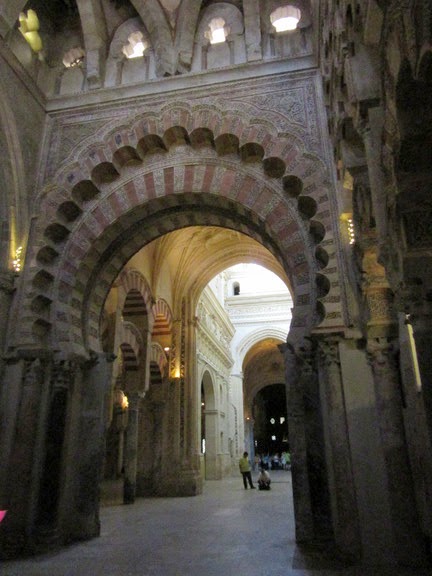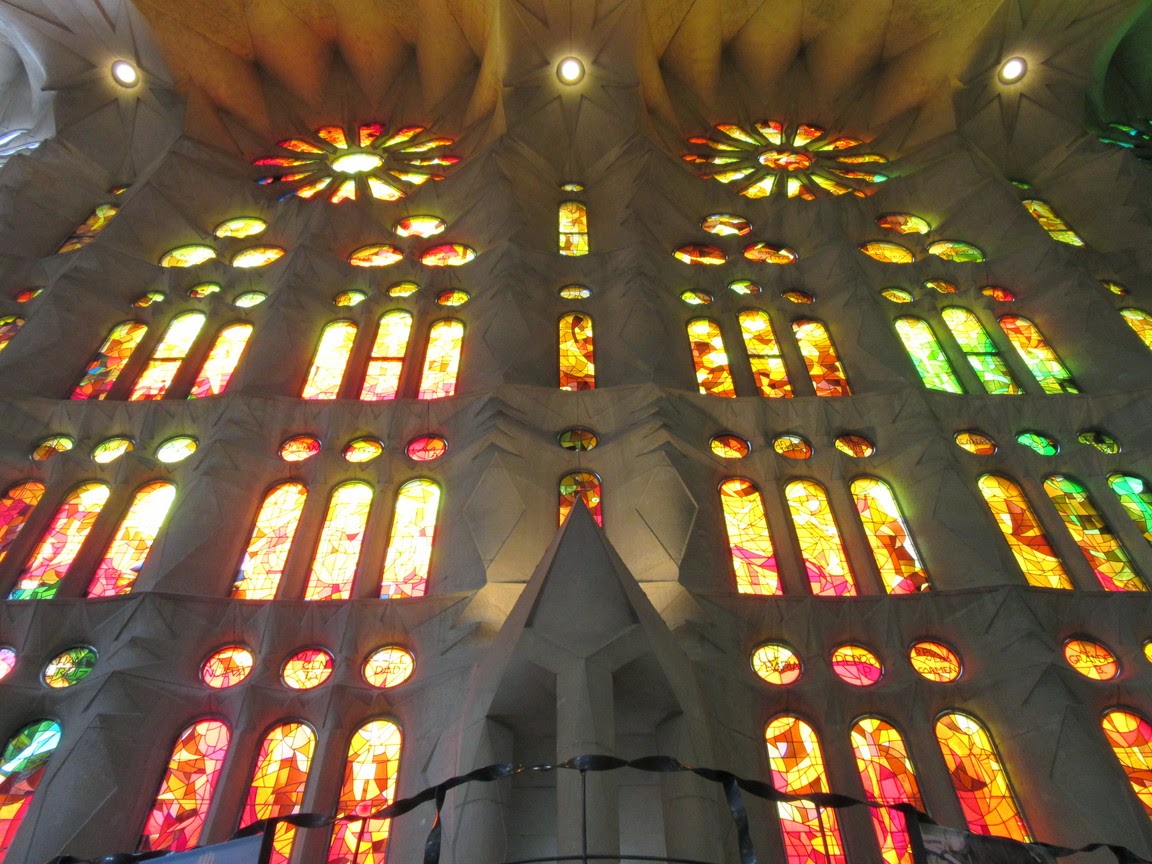If you happen to be a time traveller
from, say, 500 A.D. SPOILER ALERT. If not, well you're cool too. Read
on to learn a little history.
Much of what is now southern Spain used
to be ruled by various Moorish (Nasrid
and Ummayid) kingdoms and caliphates. There was a bit of back
and forth between the Christian and Islamic states over the centuries
until in 1492, at the end of what's called the Reconqista, the last
Islamic kingdom fell to the Christian kingdoms of Aragon and Castile.
Five centuries later, and we have the
vestiges of that influence in the culture of Andalusia.
Granada
We arrived in Granada on a hot autumn
day, and spent the next hour trying to find our accommodation. I
won't bore you with the details, but basically the bus system in
Granada is in dire need of improvement, or rather, they need to post
more information about how to get from A to B on their bus stops.
Success at last though.
The main reason for going to Granada
was for us to visit the Alhambra – a mountain fort/palace/garden
complex which was a 20 minute uphill walk from where we were staying.
Apparently it's the most famous and most visited monument in Spain.
Booking a few days ahead of time, the tickets to see the whole
complex during the day were already sold out for the two days we were
there, but by splitting the visit up, we were able to see the main
fortress/gardens in the day, and then come back at night to see the
Nasrid Palace.
The Alhambra complex is largish, and sits on a hill overlooking Granada. It's a great location for a fort, and there's been one there since before the Islamic incursion into Spain. After a time, some caliph or other decided that it'd be a nice place for a palace too, and so the Nasrid Palace was built up on the hill, with an aqueduct to bring water from a spring nearby, since water was a big requirement in the Islamic gardens of the time.
The Alhambra complex is largish, and sits on a hill overlooking Granada. It's a great location for a fort, and there's been one there since before the Islamic incursion into Spain. After a time, some caliph or other decided that it'd be a nice place for a palace too, and so the Nasrid Palace was built up on the hill, with an aqueduct to bring water from a spring nearby, since water was a big requirement in the Islamic gardens of the time.
Imposing walls of the fort.
View of Granada.
Charles V's palace. Apparently this area used to be used for bullfights. It's now a museum.
Islamic architecture at the time was into water features.
In Spain, since everyone has dinner so
late, it seems that things are open late too, which suits us well,
and our ticket for the Nasrid Palace was set for 10pm. We lined up
with around 300 odd other people, and managed to get inside at around
10:15pm.
The walls were covered with detailed carvings like this
and this.
Felt like something from Aladdin.
You might not be able to see the details here, but it's like an inverted wat temple. It's one of the ceilings, and was probably painted with even more details.
I want a courtyard like this in my house.
We enjoyed walking around the complex looking at the different buildings, walking through the gardens. The highlight though is the Nasrid Palace. It's really majestic. The Alhambra in general has aspects of what was in the Nasrid Palace, but it's a bit disjointed. The Nasrid Palace though seems much better thought out, and more cohesive.
Next morning we tried to find the Arab
Baths. Bano Arabe. Having failed
at that, we wandered around and looked at some of the buildings, went
shopping, and felt pretty tired and slightly unwell so trudged home.
That evening (or
really that afternoon) it began to rain. Not quite as hard as it had
in Warsaw, but then it began to hail. Not exactly a storm of biblical
proportions, but there was some good thunder and lightning, and I was
a little bit concerned about the windows cracking if they were hit. We'd chosen a good evening to stay in!
The next morning
we'd pretty much forgotten about the storm, until as we walked to the
train station we had to walk through mud only to find our train was
now actually a bus, presumably due to damage caused by the storm.
Through a series of sign language and English and a little bit of
Spanish (¡si!) we found
the bus, and were on our way to Cordoba.
Cordoba
Neither of us was
feeling all that well when we got to Cordoba. I was tired (early
morning) and Anna was tired and had developed a mystery cough. It was
still hot and sunny. And our schedule doesn't allow for sick days.
Cordoba is home to
the Mezquita – what used to be the largest mosque in western
Europe, turned into a cathedral.
Actually it used to
be a Visigothic church. You know the Visigoths? The ones that were
mostly Arian Christian (followers of Arius, basically a heretic).
One of the barbarian hordes that swept through the western Roman
Empire in the years after Constantine (I think. The time traveller
from 500 A.D. should be able to correct me on this one). Anyway, so
far it was a church for people who believe that Jesus was a created
being, and not fully God and fully man at the same time, then it was
levelled and became a mosque, built by the first European Caliph (who
was actually from Syria originally). Then, after many additions, and
after Cordoba was under Christian rule once more, it became a cathedral.
Still with me?
Anyway, it's a
fantastic piece of architecture, and we had a great time wandering
among the marble columns listening to the audioguide, staying cool in
the shade.
It was nice and cool and dark inside the older mosque parts.
Lighter in the slightly newer areas.
This part is the part that indicates the direction of Mecca, so it's pretty fancy.
Other parts make it obvious that it's a church too.
After we'd seen
this, we wandered around a bit, and went to get some ice creams. I was
able to use my limited Spanish in a transaction that went something
like this:
John: Hola.
Dude: Hola.
John: Dos Cornetto
por favor, uno Natrel, uno Vanilla, por favor.
Dude: Dos Euro.
Dude: Dos Euro.
I think after that
I handed him the money, he said something I didn't understand, I said
“Gracias”, we grabbed our ice creams, and we left.
And the next day,
we left Cordoba.
I'm trying to think of how exactly to describe our experience in Spain. It was a cool country, different to anywhere else we've visited so far. We both really liked it. I feel that it's kind of like what I'd expected Mexico would be like - hot, arid, exotic. It's a place that I'd happily go back to and spend more time in.
I'm trying to think of how exactly to describe our experience in Spain. It was a cool country, different to anywhere else we've visited so far. We both really liked it. I feel that it's kind of like what I'd expected Mexico would be like - hot, arid, exotic. It's a place that I'd happily go back to and spend more time in.



















































